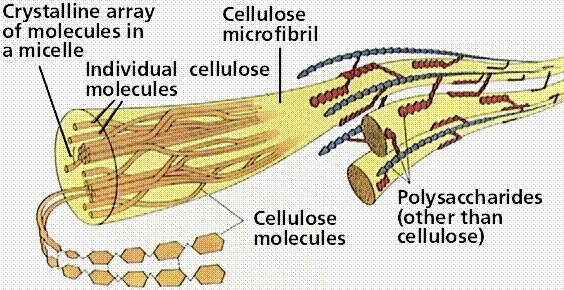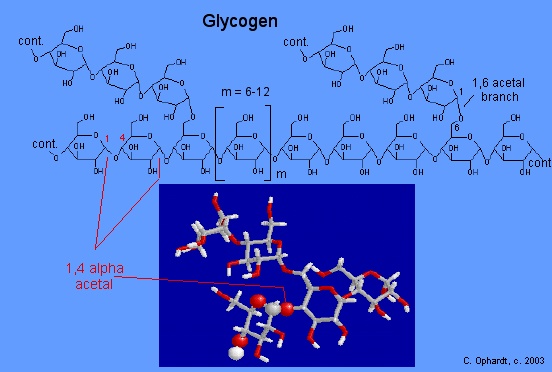Cellulose is the important polymer of Polysaccharide. Cellulose is chief organic matter in the world. Cellulose in present in plant kingdom (like wood and cotton) , it also present in some animal. It consist of unbranched polymers and contain large number (more then 15000) ofGlucose (β-1-4 linkages). We can say that the cellulose is made by repeating of Cellobiose (which is disaccharide). Cellubiose is similar with maltose in their structure.

β- configuration helps Cellulose to made liner straight chain. When the parallel chain of cellulose is made it become a fibrils which has most tensile(can be starched) property. Its more significant is that it is use for human nutrition. Its roughage helps to fulfill the appetite and also it activate and encourage the intestinal peristalsis. It does not digest in man’s gastrointestinal tube due to minimum quantity of enzyme cellulose in human.

Its average mass is approximately 570,000. Cellulose can be prepared in laboratory. If we substitute acetylated amino group on carbon number 2 instead of –OH group, it gives chitin and chitin in present in external skeleton of insect and crustacean. After he cellulose the chitin is second most abundant polymer on earth.

Hemicelluloseis common name for the group of high molar weight carbohydrate which are quite similar with cellulose. It is more soluble. It can easily decomposed. Hemicelluloses are present in the walls of plant cell. Hemicelluloses can be extracted by plant cell walls with the help of bases. And its precipitate can be form by dilute acids. When we hydrolyze the hemicellulose it produce several sugars such that uronic acid, aldohexoses, aldopentoses, and xylan.

Glycogen present in muscle as well as in lever where it show the storage of polysaccharides as similar to starch works in plant cell. Glycogen is also known as animal starch. Except muscle and liver rest of the body also contain glycogen but in less amount. Some plants also have glycogen. In structure it is quite similar with amylopectin. Because it contains polymer of α-D-glucose units, so it have both 1→4 and 1→6 linkages. Glycogen is much branched as compared to amylopectain molecules. In glycogen molecules 1→4 linkages are 92% and 8% is of 1→6 linkages. When we hydrolyze glycogen it will give us glucose.




